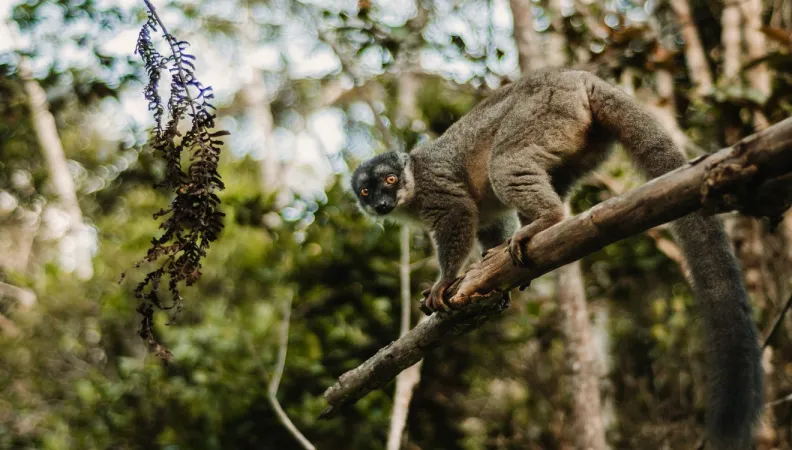Share the page
Holistic Forest Conservation in Madagascar: Is it Working?
Published on

The lush forests of Madagascar are home to a bewildering variety of wildlife and biodiversity. But they are threatened by deforestation and the destruction of natural habitats. The Holistic Forest Conservation Project has begun to reverse the damage, not only by replanting trees, but also by helping reform detrimental forms of development.
|
Evaluations Report 2023
Our work in photos and figures
Find out more
|
Using evaluations to improve forest conservation in Madagascar
Forests cover 18.5% of Madagascar, significantly lower than two decades ago. According to Global Forest Watch, Madagascar has lost 4.62 Mha of tree cover, equivalent to a 27% decrease in tree cover since 2000.
But the rate of deforestation has slowed. The Holistic Forest Conservation Project has been part of the effort to stop tree loss since 2008. Cofinanced by AFD, the French Facility for Global Environment (FFEM) and Air France, the project has produced a number of benefits, but recent evaluations also reveal ways in which it can be made more effective.
Three evaluations have been conducted since the launch of the project – at the end of its first phase in 2011, again in 2017, and ex post in 2018.
Further reading: Evaluations Report 2023
“Keys for improving outcomes”
The evaluation of phase 1 showed that the dispersal of the five original project sites made it “difficult to monitor the conservation activities and their outcomes, and to manage and allocate human resources,” says Léa Poulin, Evaluation Officer at AFD. So, phase 2 was refocused on two sites and phase 3 will go even further by focusing solely on the Beampingaratsy forest in the southeast of the island.
Following this first evaluation, the activity-based approach was replaced by a community-based approach, focusing on how local people use the forests and its resources. PHCF now focuses on optimizing forest management by creating grassroots communities (COBA), raising their awareness of forest vulnerabilities and providing training. After the mid-term evaluation of phase 2, these groups were given technical and financial resources.
Further reading: Forests: As Vital as they are Vulnerable
The evaluation of phase 1 also recommended developing a geographical information system to easily locate activities and introduce biodiversity monitoring indicators. Studies conducted over the next phase identified priority areas for the protection of target species.
“The evaluations conducted so far provide an objective view of what has worked well or not so well under PHCF,” says Mathieu Tiberghien, co-director of the NGO Nitidae which is evaluating phase 2 of PHCF. “By making a well-substantiated evaluation of its different phases, they also provide keys for preparing the next phases and improving the project’s outcomes.”
The final evaluation of phase 2 also highlights:
- A greater impact on deforestation: the annual deforestation rate in the southern part of the Beampingaratsy forest fell from 720 to 244 hectares
- An encouraging carbon footprint: 810,858 tons of CO2 equivalent remained sequestered, mainly due to avoided deforestation
- Improved biodiversity conversation: 442 hectares were replanted. They benefit from a temporary protection order pending a forthcoming recognition as new protected areas
- The emergence of more sustainable agricultural practices: 27 development and management plans focusing on agricultural activities have helped producers adopt agroecological practices such as agroforestry and anti-erosion schemes
Community dimension central to the next phase of PHCF
The appraisal of phase 4 of PHCF used socio-anthropological analyses to gain a better understanding of these dynamics. “There’s a wealth of ancestral practices and traditions in south-east Madagascar and it’s essential to take them into account,” says Mathieu Tiberghien. “The socio-anthropological analyses conducted prior to the appraisal of phase 4 helped us build our knowledge, improve our understanding of the context, and adapt our approach.”
He added: “This assessment was essential. During phase 4, these forest user associations will have a major role to play when the Beampingaratsy protected area is formally established.”
Phase 4 will build on the studies already conducted to more precisely locate the high biodiversity areas, which will benefit from strict conservation.
